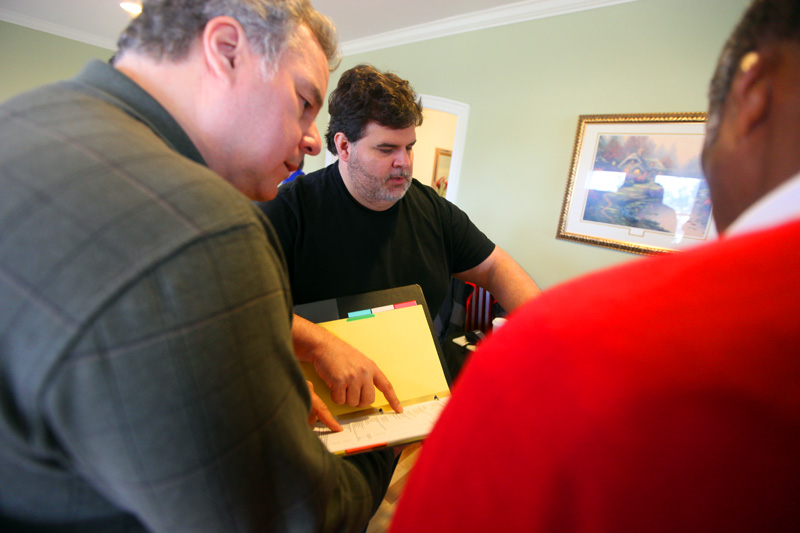| June 1, 2009
Listening and Product Development
Most serious audio reviews include technical information
about how the product being reviewed was designed and engineered. We might be told about
the engineers themselves, their track records and reputations, if that sheds some light on
the product. We often hear about exotic materials, new ways of putting things together,
and never-heard-of-before technology to control factors that influence the sound we hear.
In fact, if we don’t read about the key technological elements of the gear, we
rightly believe that something important is missing from the review.
Furthermore, these engineering features are usually framed
within a simple (and sometimes simplistic) philosophy of design, such as "short
signal pathways are good" or "balanced circuits have less distortion" or
"point-to-point wiring sounds better than a circuit board." Even where a product
is manufactured becomes part of the story. Just a few years ago, products made in China
were of suspect quality; but with so many audio companies now doing much of their
manufacturing work in Asia, this is seen as a canny, cost-saving, even quality-improving
move.
So if a reputable company tells a reasonably credible story
about how a product was engineered and built, and we read a positive report on its sound
by a reviewer we trust, we feel we have enough information to decide on a purchase.
It seems to me, though, that a key part of the story is
often missing, and it’s the answer to a simple question: During the design process,
who listens to the product the engineers are creating, and tells them how it sounds?
There are enormous differences in how audio companies
engage in this process. Some companies rely entirely on their engineers to create a
product that sounds as good as the engineer can make it. One astonishing comment from a
company owner I interviewed was that his company deliberately does not do listening
tests on the products their world-class designer develops for them, because listening is
too subjective. They basically don’t trust that they could provide any meaningful
feedback about how their prototypes sound that would guide their engineer toward creating
a better-sounding product.
Other companies -- the majority, in my experience -- have
"at the top" one or a few people who make the final decision about whether or
not a product sounds they way they want it to sound. In a small company this might be the
owner, who manufactures the product in his basement. In a larger company it might be the
CEO, or perhaps a division head who decides whether or not the product sounds the way
it’s supposed to.
The problem is that these people are often too close to the
process to actually hear what they’ve created. I have interviewed more than one
company leader who believes he is making state-of-the-art components, but whose products
have sonic characteristics that make them something less than that. Even more sadly, I
once heard a company owner go to some length to rationalize an obvious flaw in the sound
of his product that he didn’t seem to realize was a flaw at all.

Albert Bellg (left) meets with Mike Latvis (center) of
Harmonic Resolution Systems to discuss product details at the TWBAS 2009 event in March.
In short, many companies that rely entirely on their
engineers or other in-house listeners may be compromising the quality of their products.
There are notable exceptions -- companies whose engineers, owners, or other in-house staff
are superb listeners, and which produce superb-sounding products -- but in my experience
as a reviewer, these are in the minority. The more usual result is that poor or average
listening -- or none at all -- during the development of a product results in audio gear
that performs "OK," but less well than it might otherwise have.
A better option is when, during the development of a
product, a company takes listening seriously enough to seek out experienced listeners.
These might include qualified listeners in-house, but it also usually involves seeking the
opinions of respected people outside the company who are less involved in its daily
activities and who may therefore be less biased in reporting what they hear. Equally
important is to find people with particular musical experience who are able to report on
the product’s performance in relation to that experience. For instance, if a company
is developing products to accurately reproduce the timbres of acoustic instruments, it
needs feedback during the development of those products from listeners with substantial
experience listening to live classical and other types of unamplified music.
It’s been rewarding to find companies doing that, and
I’ve found that the gear they make is more likely to have a character and a quality
that extend the possibilities of high-end audio. The challenge for the engineers, however,
is not small. When truly useful feedback from good listeners is available, it’s no
longer about finding a way to improve the readings from their test equipment, which is a
skill one would expect most audio engineers to have. It’s about something much more
difficult: translating what credible listeners have to say into technology that sounds
more like a musical performance.
To successfully and consistently do that is clearly an art.
But the engineers who can translate quality verbal feedback into audible results, as well
as the companies that hire them and the products they develop, are all the better for it
-- as are those of us sitting back in our listening chairs, smiling.
. . . Albert Bellg
albertb@ultraaudio.com
|